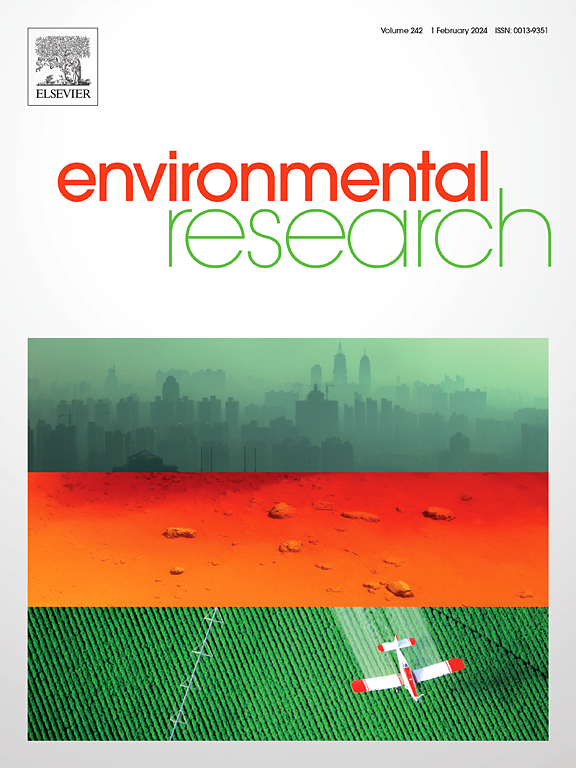纳米气泡对磷配水系统污垢控制的影响:性能和机理研究
IF 7.7
2区 环境科学与生态学
Q1 ENVIRONMENTAL SCIENCES
引用次数: 0
摘要
磷水分配系统(PWDS)是各领域磷利用的有效载体。然而,污水处理系统中普遍存在结垢现象,导致了一系列技术和经济问题。本研究评估了纳米气泡(NBs)在污水处理系统中控制污染,特别是磷污染的潜力。结果表明,NBs抑制了污垢积累,总体减少了8.7 - 42.9%。具体来说,由于NBs带负电荷,它似乎可以吸附水中的阳离子(如钙离子),从而使污染中的羟基磷灰石沉淀减少35.7% - 84.0%。同时,NBs促进方解石向结构松散的文石转变,使钙析出量降低7.3 - 54.7%。NBs还能通过增强混凝作用诱导颗粒聚集沉降,腐植酸磷酸盐含量降低31.5 ~ 40.7%,硅酸盐颗粒含量降低10.8 ~ 47.9%。综上所述,本研究阐明了NBs如何影响和控制磷结垢以及其他类型的结垢,为开发环保有效的结垢控制策略提供了宝贵的见解。本文章由计算机程序翻译,如有差异,请以英文原文为准。

Impacts of nanobubbles on fouling control in phosphorus water distribution systems: Performance and mechanism investigation
Phosphorus water distribution system (PWDS) serves as an efficient carrier for phosphorus utilization across various fields. However, fouling formation commonly occurs in PWDS, leading to a range of technical and economic issues. This study evaluates the potential of nanobubbles (NBs) for controlling fouling, particularly phosphorus fouling, in PWDS. The results indicate that NBs inhibited fouling accumulation, resulting in an overall reduction of 8.7–42.9 %. Specifically, NBs appeared to adsorb cations (e.g., calcium ions) in the water due to their negative charged, resulting in a reduction of hydroxyapatite precipitation in fouling by 35.7–84.0 %. Meanwhile, NBs facilitated the transformation of calcite into loosely structured aragonite, which reduced the calcium precipitation content by 7.3–54.7 %. NBs can also induce particle aggregation and settling through enhanced coagulation, leading to a reduction in humic acid phosphate content by 31.5–40.7 % and silicate particle content by 10.8–47.9 %, respectively. In summary, this study elucidates how NBs influence and control phosphorus fouling as well as other types of fouling, providing valuable insights for the development of environmentally friendly and effective fouling control strategies.
求助全文
通过发布文献求助,成功后即可免费获取论文全文。
去求助
来源期刊

Environmental Research
环境科学-公共卫生、环境卫生与职业卫生
CiteScore
12.60
自引率
8.40%
发文量
2480
审稿时长
4.7 months
期刊介绍:
The Environmental Research journal presents a broad range of interdisciplinary research, focused on addressing worldwide environmental concerns and featuring innovative findings. Our publication strives to explore relevant anthropogenic issues across various environmental sectors, showcasing practical applications in real-life settings.
 求助内容:
求助内容: 应助结果提醒方式:
应助结果提醒方式:


